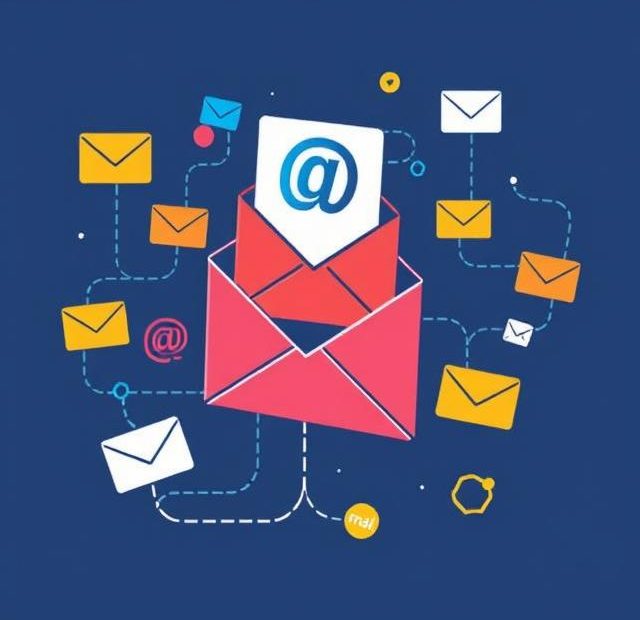Email marketing is evolving rapidly, and generic mass emails just don’t cut it anymore. Today’s customers expect relevance, timing, and personalization in every message. Fortunately, artificial intelligence (AI) is transforming how marketers meet these expectations. With AI tools, you can now deliver personalized email marketing campaigns that resonate deeply with your audience—at scale.
In this article, we’ll explore how AI is used in personalized email marketing, what tools you can use, and how to make your campaigns smarter, more effective, and more human.
Why Personalization Matters in Email Marketing
Personalization goes far beyond using a subscriber’s first name. It’s about delivering the right message to the right person at the right time. And it works:
-
Emails with personalized subject lines are 26% more likely to be opened.
-
Targeted emails generate 58% of all revenue from email campaigns.
-
Personalized content boosts click-through rates by 2x or more.
That’s where AI tools come into play—analyzing user data, predicting behavior, and automating personalization at a level humans alone simply can’t match.
How AI Enhances Personalized Email Marketing
AI helps automate, optimize, and scale personalization. Here are the key ways AI is making a difference:
1. Behavioral Segmentation
AI tools analyze user behavior (clicks, purchases, website activity, and more) to segment your audience in real-time. Instead of static lists, you can send emails based on:
-
Recently viewed products
-
Abandoned carts
-
Pages browsed
-
Time since last engagement
This type of segmentation creates more relevant messaging, which leads to better engagement.
2. Smart Subject Line Generation
AI-powered writing tools like Phrasee or Copy.ai can generate subject lines that are proven to drive opens. They analyze past performance and A/B test hundreds of variations to find the most effective wording for each audience segment.
3. Send-Time Optimization
Not everyone opens their emails at the same time. AI tools like Mailchimp, Sendinblue, or ActiveCampaign use predictive algorithms to determine the optimal time to send emails to each subscriber based on historical behavior.
This results in higher open and click rates, simply by sending at the right time.
4. Dynamic Content Creation
Using AI, you can tailor email content blocks based on user data. For example:
-
A customer interested in shoes sees the latest sneaker deals.
-
A user browsing jackets gets outerwear recommendations.
-
A subscriber in New York gets weather-appropriate promotions.
Tools like Dynamic Yield or Zeta Global let you swap content dynamically in real-time, providing a hyper-relevant experience.
5. Predictive Analytics and Recommendations
AI models can analyze past purchase behavior and predict what a user is most likely to buy next. This lets you:
-
Send product recommendations based on previous behavior
-
Create upsell or cross-sell email sequences
-
Anticipate when a customer might churn and trigger retention campaigns
Platforms like Klaviyo and Sailthru excel in predictive personalization for eCommerce brands.
Best AI Tools for Personalized Email Marketing
Ready to level up your campaigns? Here are some top AI tools to consider:
1. Mailchimp
A leader in email marketing, Mailchimp now includes AI features like send-time optimization, personalized product recommendations, and predictive demographics.
Best For: Small to mid-sized businesses looking for built-in AI features in an all-in-one platform.
2. ActiveCampaign
This platform offers powerful automation with AI-enhanced tools for audience segmentation, lead scoring, and dynamic content delivery.
Best For: Businesses seeking deep automation and CRM integration.
3. Klaviyo
Perfect for eCommerce, Klaviyo uses AI to personalize emails based on user behavior, purchases, and browsing activity.
Best For: Online stores and Shopify users.
4. Persado
Using natural language processing (NLP), Persado creates emotional, personalized messaging that increases engagement.
Best For: Large enterprises focused on emotional intelligence and brand messaging.
5. Phrasee
Phrasee’s AI generates and optimizes subject lines, headers, and even CTAs to improve email performance and conversions.
Best For: Marketers seeking AI-generated copy that drives clicks.
Getting Started: Best Practices for AI-Powered Personalization
To succeed with personalized email marketing using AI tools, follow these best practices:
✅ Start with Clean Data
Garbage in, garbage out. Ensure your data is accurate, organized, and GDPR-compliant. AI relies on clean, structured information to work effectively.
✅ Define Clear Goals
Are you aiming for more sales, better retention, or lead nurturing? Choose tools and tactics based on specific marketing goals.
✅ A/B Test Frequently
Even with AI, testing is essential. Try different subject lines, content layouts, and personalization tactics to see what works best.
✅ Monitor and Adjust
AI gets smarter over time—but only if you feed it the right feedback. Track your KPIs (open rates, clicks, conversions) and make adjustments regularly.
✅ Combine Automation with Human Touch
AI personalizes at scale, but don’t forget the value of human empathy. Use AI insights to create emotionally intelligent campaigns that connect.
Final Thoughts
Personalization is no longer a “nice to have” in email marketing—it’s a must. Thanks to AI tools, delivering customized, engaging, and perfectly timed emails has never been easier or more efficient.
By using personalized email marketing with AI tools, you can stand out in crowded inboxes, deepen relationships with your audience, and drive more revenue—without burning out your team.
Start small, experiment with one or two AI tools, and scale your personalization efforts as you grow. The future of email marketing is smart, automated, and deeply personal—and AI is your secret weapon to get there.
Also, you can learn more about Automate Email Sequences here.
